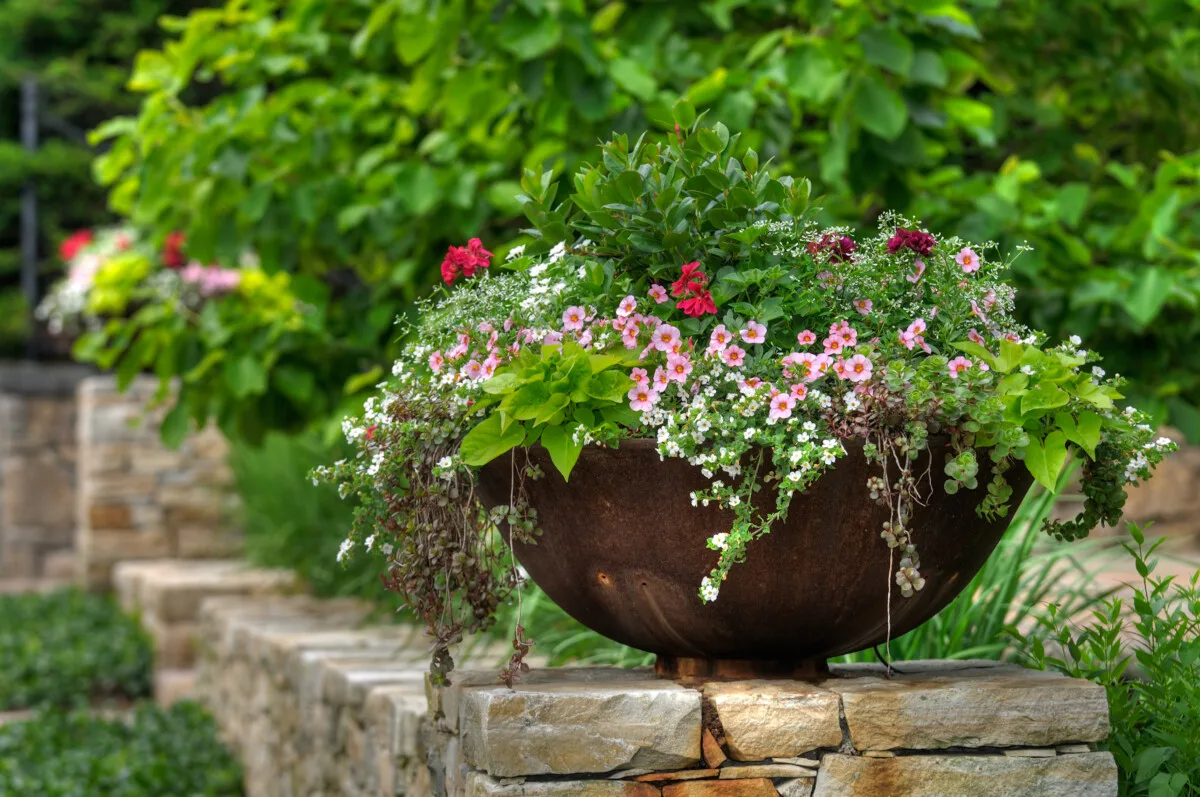
Hanging baskets, window boxes, railing planters, and a healthy number of terracotta pots are just the thing to elevate a monotone porch or patio into a heavenly place filled with delightful sights and scents.
Mixing flowers in a container is its own kind of art form, an interesting intersection between gardening and flower arranging.
Putting it all together is similar to creating a floral bouquet, except these flowers are alive and will move and change as the weeks pass. And since soil capacity is limited in a container, the size of the plant and its root system matters a lot more here.
You’ll want flowers that stay in bloom all season long and plant combinations that have shapes and textures that complement and contrast. And the overall tone you want to strike – will it be soft and charming or vibrant and bold? Or something else entirely?
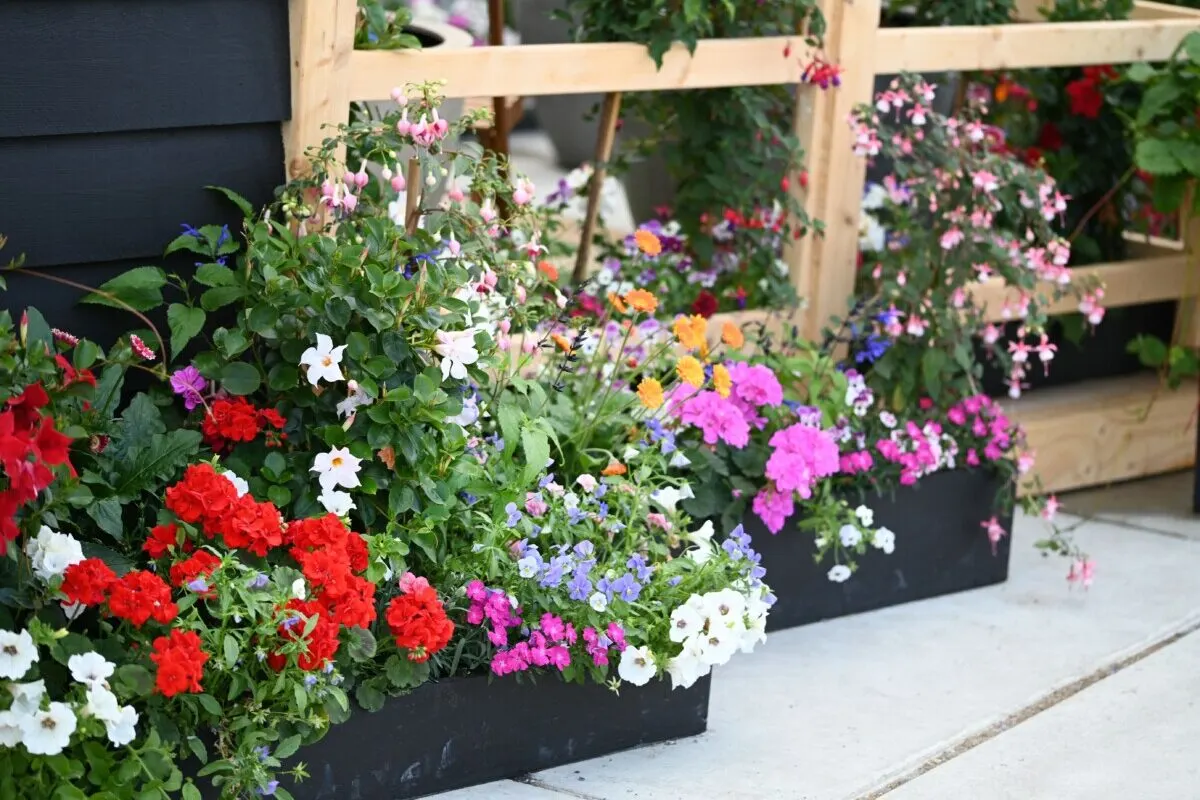
You can luck into some interesting combinations by simply winging it, but the finest arrangements will be thoughtful, balanced, and intentional, with good plant compositions and pleasing color schemes. Think outside of flowers, and grow herbs in your containers as well to add beautiful and edible foliage.
Garden markets and plant nurseries will have hundreds of planter-appropriate flowers to choose from and, therefore, thousands of possible plant combinations.
The Thriller, Filler & Spiller Planting Technique
To help narrow it down, there’s a basic recipe for planting up containers: the thriller, filler, and spiller technique.
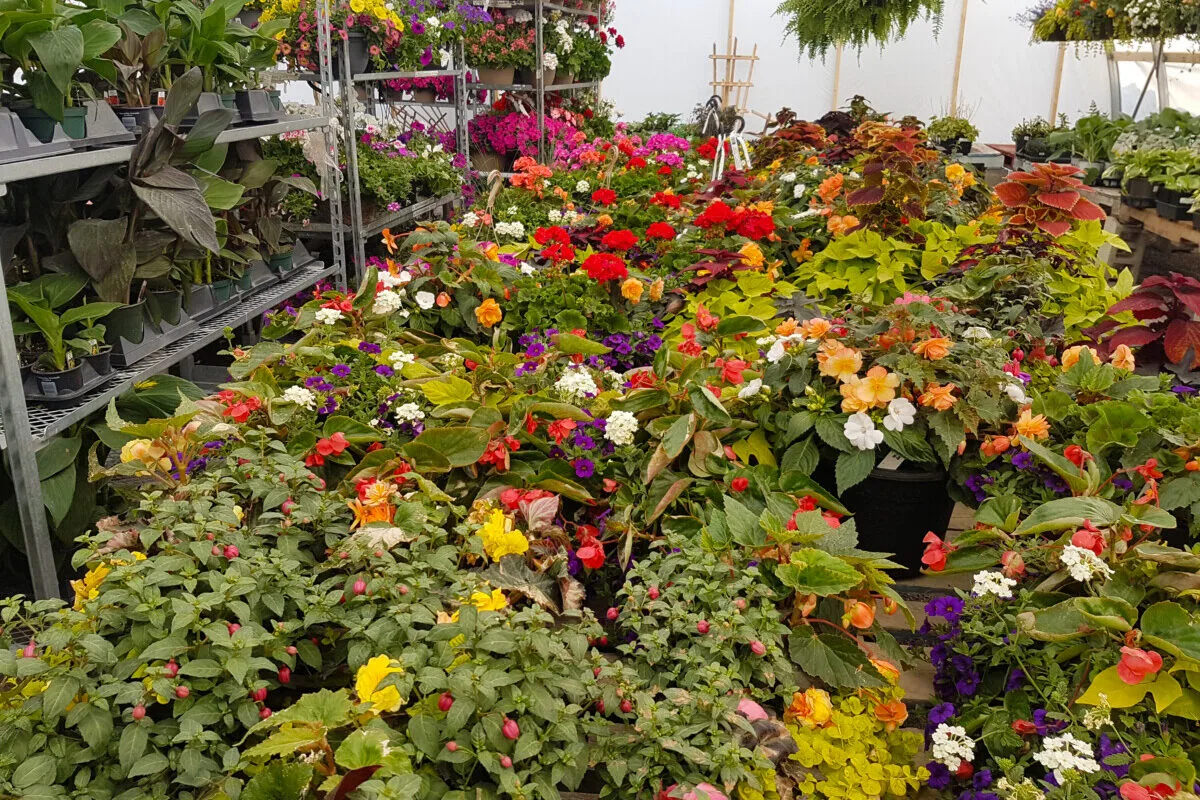
Use this fool-proof formula to create stunning flower combinations every time.
Thrillers are the Focal Point
Big, bold, beautiful, and statement plants, thrillers are the star of the show. Usually taller than the rest, these plants draw the eye and set the stage for the rest of the arrangement.
While any gorgeous plant has thriller potential, these showstoppers will have extraordinary traits like captivating colors, extraordinary foliage, or enthralling shapes.
1. Summer Snapdragon (Angelonia angustifolia)
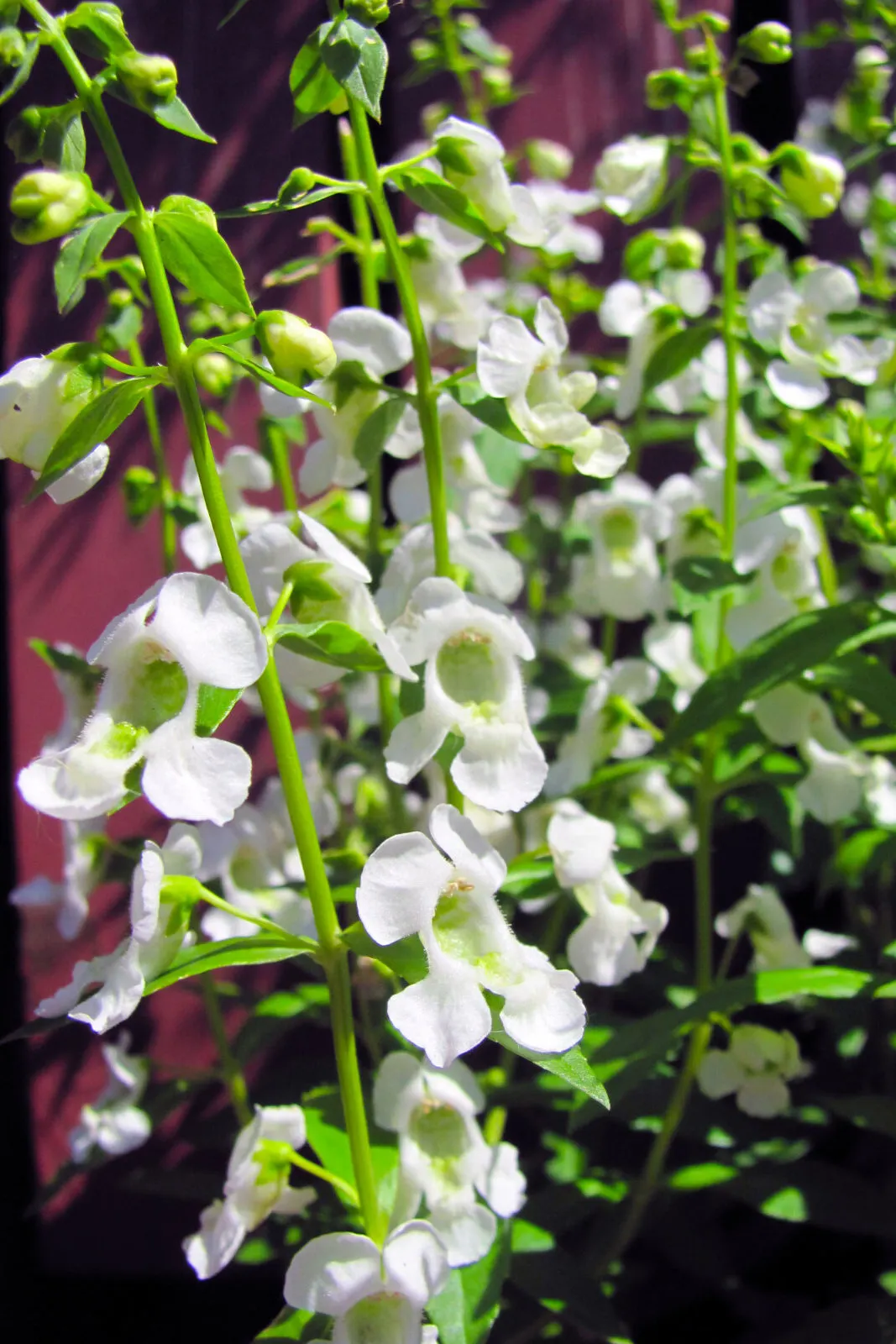
Unlike true snapdragons that fade as soon as summer heats up, summer snapdragon is a hardy lookalike that blooms continuously from late spring to early fall.
Summer snapdragon is a low-maintenance beauty from Mexico with exceptional heat and drought tolerance. The fragrant flowers, available in blues, purples, pinks, white, and bicolor, bloom along terminal spikes and require no deadheading to prompt re-bloom.
Growing 12 to 24 inches tall and 9 to 12 inches wide, summer snapdragon is an excellent thriller when planted in the center or back of your container.
Sun exposure: Full sun
Blooming period: May to September
2. Mandevilla (Mandevilla spp.)
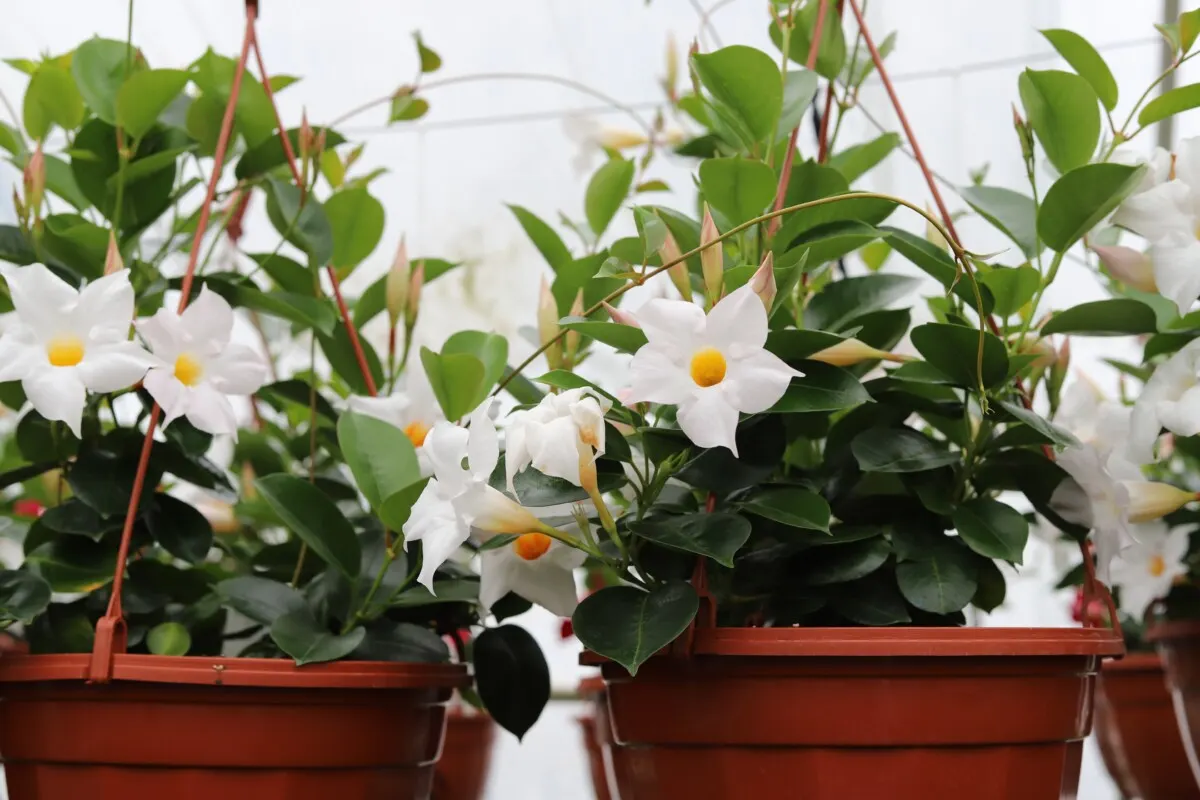
A thriller with loads of vertical interest, mandevilla is a showy and fragrant flowering vine that blooms through summer and into the fall.
Mandevilla is a climber that grows 10 feet or more in the ground. Yet, when confined to a large pot, it will be kept to a more reasonable 3 to 5 feet. Give it a 3-foot trellis to twine around and pinch back any growth that droops beyond.
It’s worth a little extra upkeep for the lovely mandevilla blooms that come in hues of pink, white, or red. The flowers are large and funnel-shaped, flaring out in 5-petal wheels, each 3 to 4 inches across.
Sun exposure: Full sun to partial shade
Blooming period: June to frost
3. Flowering Tobacco (Nicotiana alata)
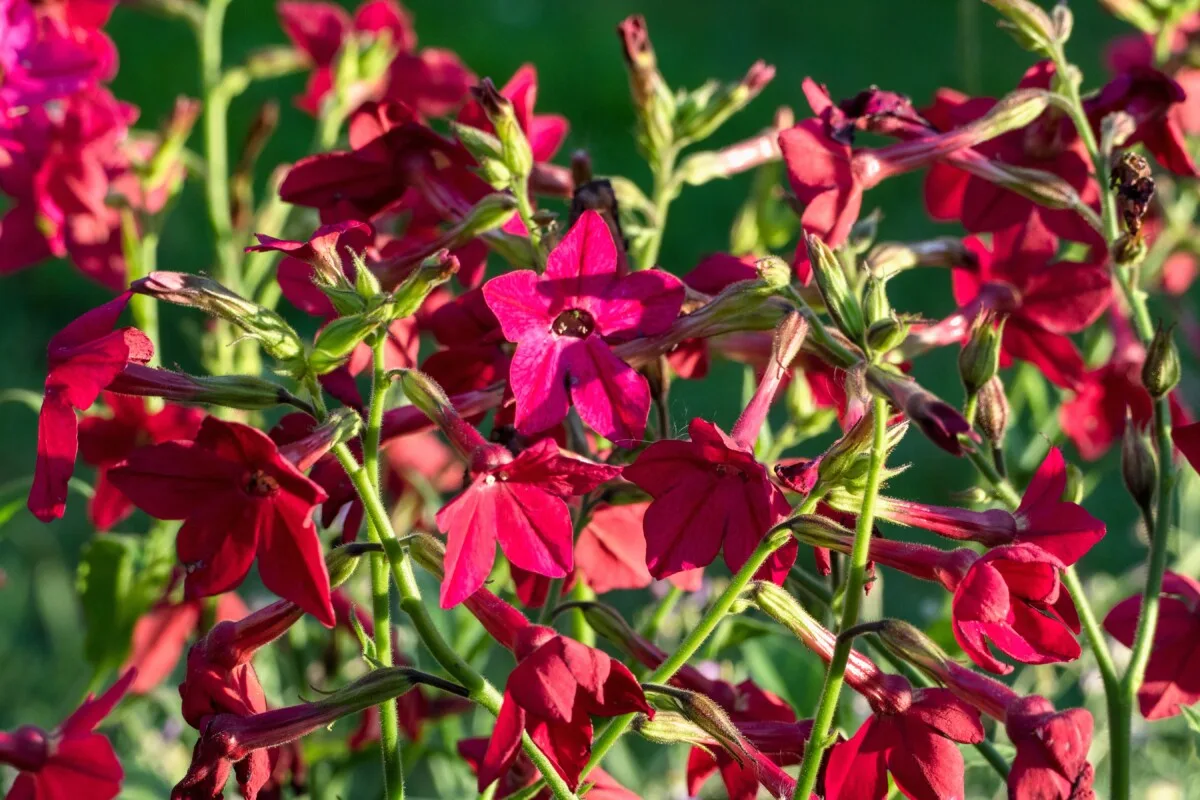
For those summer evenings sitting around the patio, we have flowering tobacco to keep us enchanted long into the night.
Flowering tobacco blooms with sweetly scented trumpet-shaped flowers in yellow-green, white, pink, or red. The flowering stalks arise above a bed of fuzzy dark green basal leaves. The star-shaped blooms open only at night, releasing a jasmine-like perfume into the air to draw in nocturnal pollinators.
Best for large pots and planters, flowering tobacco can grow 3 to 5 feet tall and up to 2 feet wide. Keep its growth tamed and compact in a container by pruning back the flowering stalks.
Sun exposure: Full sun to partial shade
Blooming period: June to frost
4. Celosia (Celosia argenta)
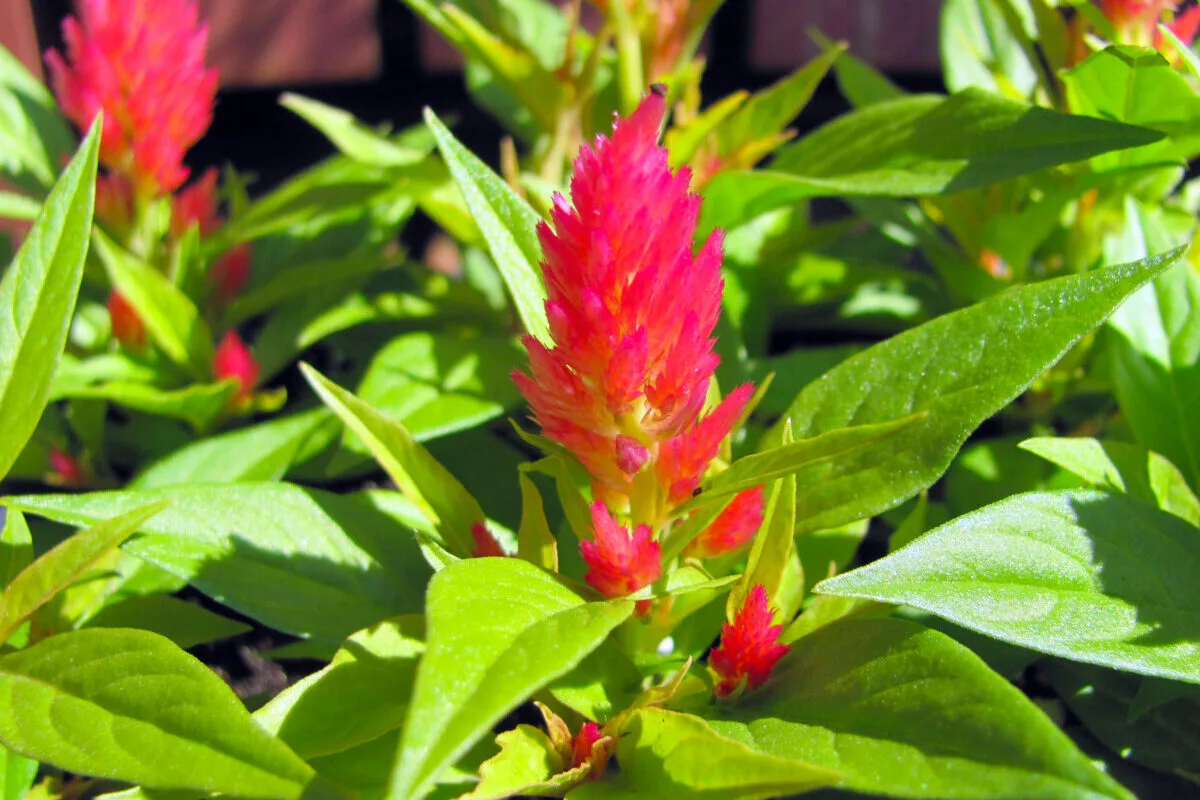
Celosias make up a wonderful group of eye-catching plants that are sure to bring a thrill.
There’s the plume cockscomb of the Plumosa Group that blooms densely on upright feathery spikes in the brightest shades of red, yellow, orange, purple, pink, and cream.
There’s also the Spicata Group, known as silver cockscomb. This celosia features narrower plumes and softer colors that transition, in an ombre style, from deep pink to silver down the flowerhead.
Then there’s crested cockscomb from the Cristata Group. The highly unusual flowers, in red, rose, cream, or yellow, are thick, flat, and bunched up into wavy ridges.
Whichever you fancy, there’s a type of celosia for any size container. Larger types will grow up to 3 feet tall and 18 inches wide, while dwarf varieties will grow only 12 inches tall and half as wide.
Sun exposure: Full sun
Blooming period: June to frost
5. Angel Wings (Caladium bicolor)
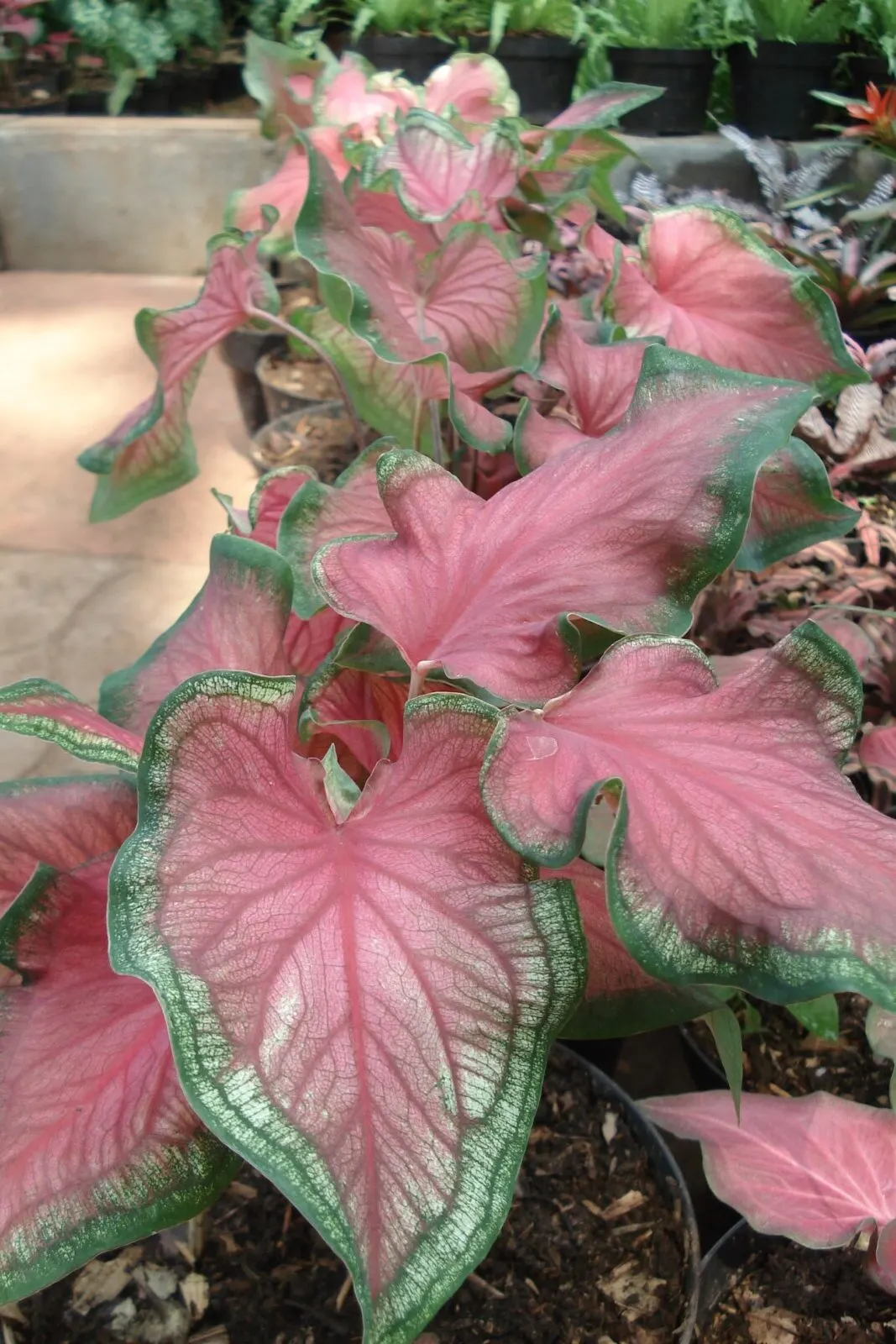
Angel wings aren’t grown so much for their flowers, which are tiny, insignificant, and usually hidden away under the foliage. Rather, angel wings are beloved for the large arrowhead-shaped leaves that come in a spectacular range of colors.
There are dozens of cultivars that combine two or more colors in reds, pinks, whites, or greens. The foliage might be mottled, spotted, speckled, or softly fade from one hue to the next.
You can find varieties that will grow only 12 inches tall and others that can hit 3 feet or more in height, nicely filling the thriller position in baskets, pots, and planters.
Sun exposure: Partial to full shade
6. Canna Lily (Canna spp.)
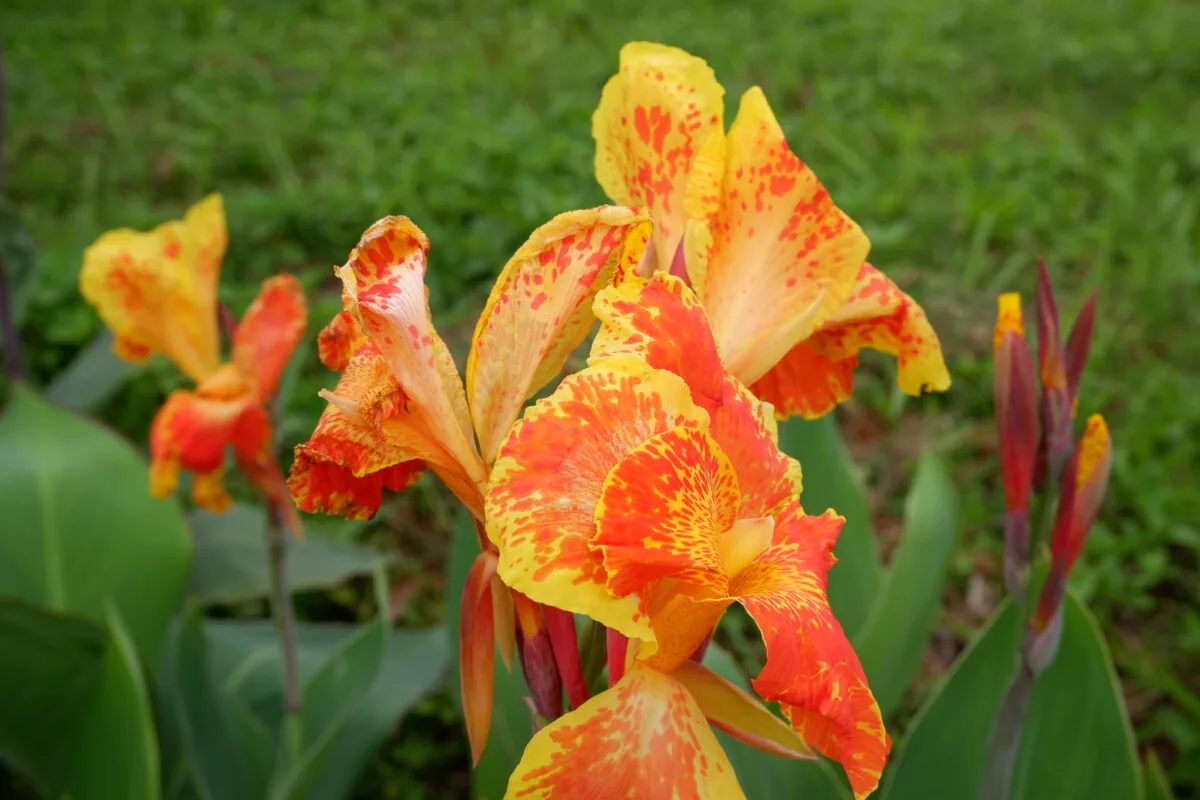
As one of the most popular thrillers to date, the canna lily is a stunning specimen that will give the mixed pot that tropical feel.
Canna lily blooms from mid-summer to autumn on erect stems with flowers reminiscent of iris. The colors range from reds, pinks, oranges, yellows, cream, and bicolor.
As the flowers fade, the delightful foliage remains. Canna lily has large paddle-like leaves in greens, bluish-greens, bronze, or orange – depending on the variety – with striped and variegated veins that look especially splendid when backlit by the sun.
Canna lily is a big one better reserved for your largest pots. It can grow as much as 6 feet tall and wide by the end of summer.
Sun exposure: Full sun
Blooming period: July to September
Fillers Pad Out the Space
Adding mass to the container, fillers are flowering or foliage plants that surround the thriller. Fillers are often bushy and billowy, contributing a wonderful contrast in texture and color to the mix.
Choose fillers that are a third or two-thirds the size of your star player so as not to overwhelm your thriller.
7. Floss Flower (Ageratum houstonianum)

Floss flower forms compact yet bushy mounds that provide an excellent counterpoint in color, shape, and texture.
From late spring onwards, the plant is thick with fluffy, rounded, lightly frilled flowers in shades of blue, pink, white, red, or bicolor. Cultivars range from 4 inches to 18 inches tall, making floss flower a suitable filler choice for any potted mix.
Deadheading is optional but will promote even more profuse blooming.
Sun exposure: Full sun to partial shade
Blooming period: June to frost
8. Petunia (Petunia spp.)
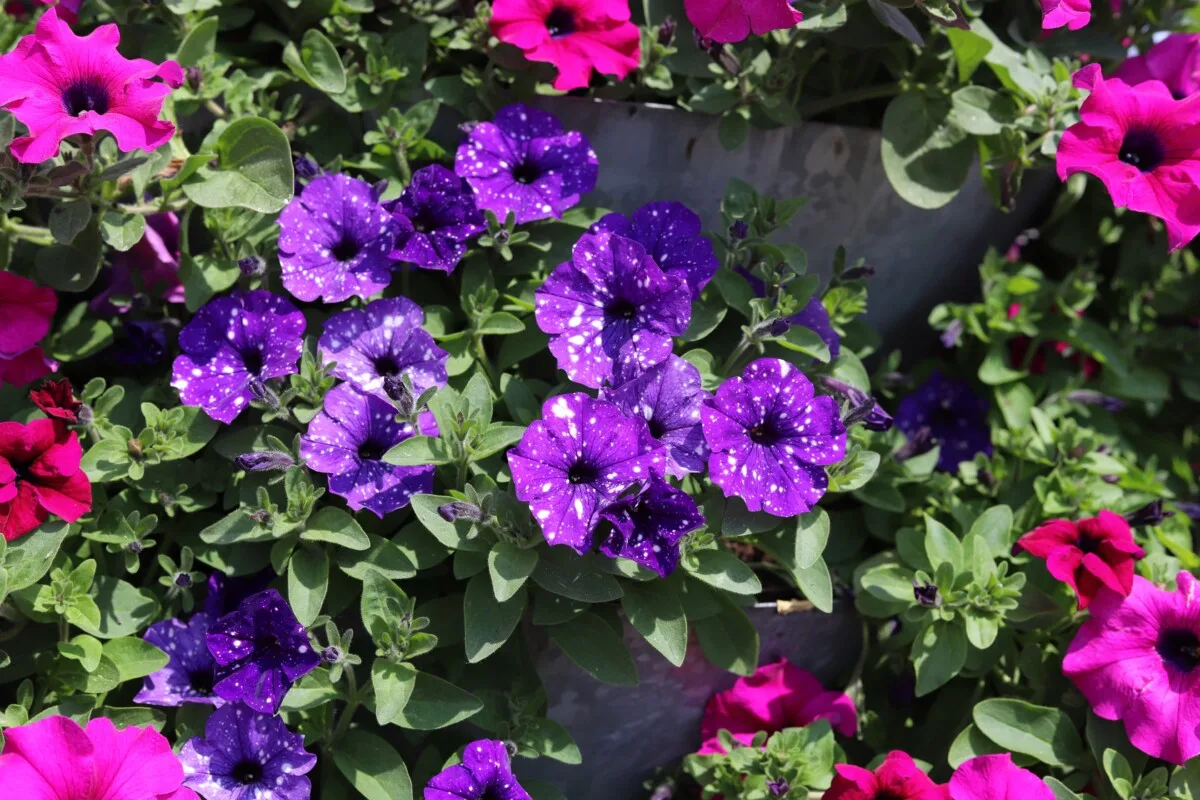
Between ease of care, versatility in the garden, and non-stop blooms, it’s no wonder petunias are among the most popular bedding plants.
There’s an enormous range of complex hybrids to choose from, and most have a wonderful spreading habit with mass appeal. Some grow only 6 inches tall, while others can reach heights of 2 feet.
Petunias come in every color of the rainbow, and many varieties have a sweet fruity aroma that attracts butterflies, hummingbirds – and humans – alike.
Sun exposure: Full sun to partial shade
Blooming period: May to frost
9. Begonia (Begonia spp.)
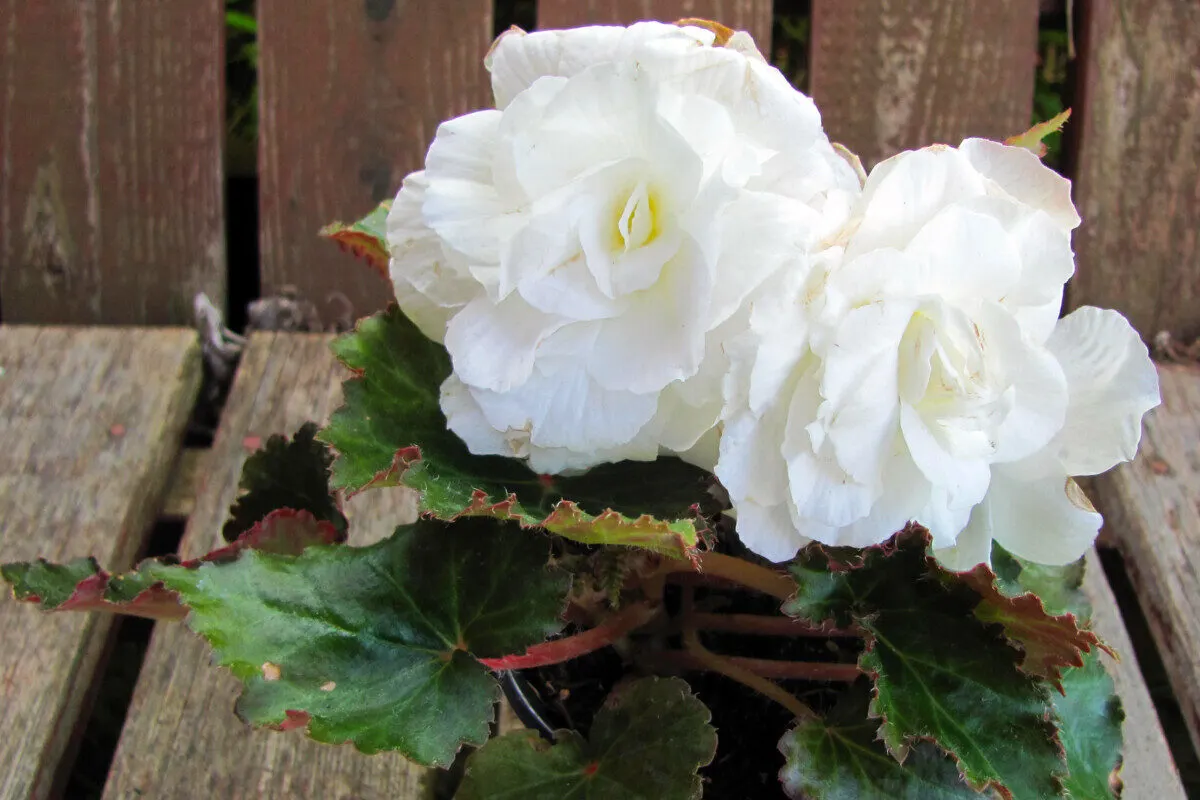
With 1,300 species in the genus, begonias are highly prized in the container garden for their continuously blooming flowers or strikingly colorful foliage.
Tuberous begonias have the largest flowers in the genus and come in a range of reds, pinks, yellows, oranges, and creamy white. These varieties can be upright or trailing with fleshy stems and hairy leaves in green or burgundy. Growing 12 to 18 inches tall, tuberous begonias are great for both baskets and planters.
Wax begonias feature dark green foliage and small but numerous clusters of single or double flowers in red, pink, white, and bicolor. Typical cultivars will grow 12 inches tall, while dwarf varieties hit only 8 inches in height.
For the shadiest locations, rex begonias proffer up stunning heart-shaped foliage up to 12 inches long and 8 inches wide. Often with prominent veining, amazing textures, and fantastic color combinations, rex begonias are best kept in partial to full shade.
Sun exposure: Partial shade
Blooming period: June to frost
10. Gerbera Daisy (Gerbera jamesonii)
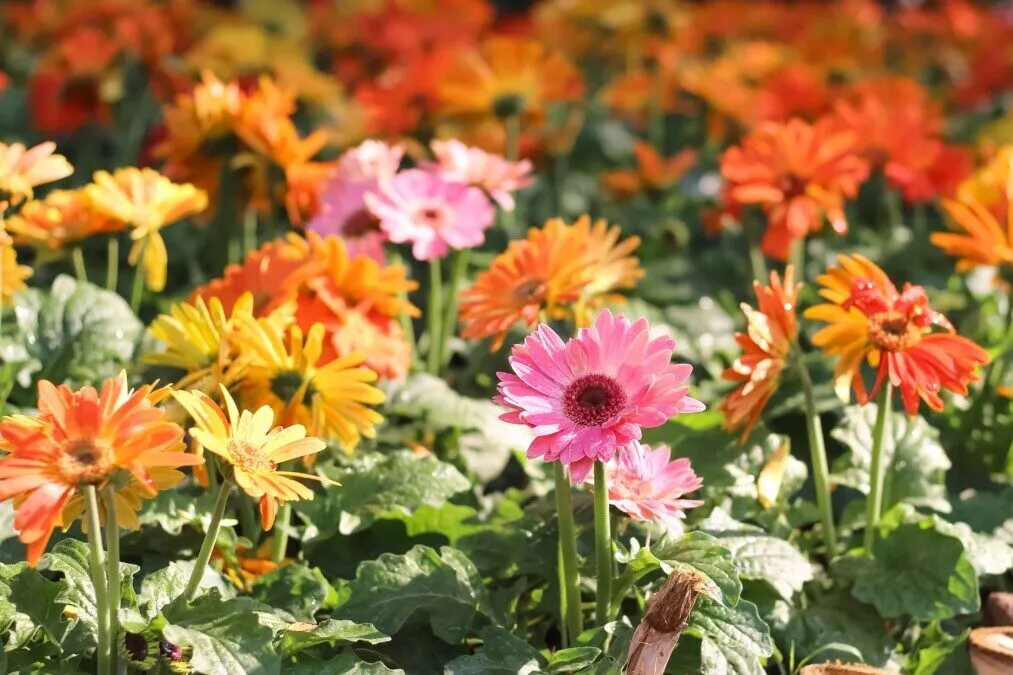
The ever-adorable gerbera daisy – also called the African daisy – is a charming specimen that adds much color to the filler niche in larger pots and planters.
An upright plant that forms a basal rosette of dark green leaves, the blooms arise on naked stems with single or semi-double daisies up to 5 inches wide. There’s a huge range of bright and cheery colors to choose from, in reds, yellows, oranges, white, pastels, and bicolor.
Growing up to 18 inches tall, gerbera daisies flower freely throughout the warm months but bloom most profusely in early summer and late fall.
Sun exposure: Full sun to partial shade
Blooming period: May to October
11. Annual Lobelia (Lobelia erinus)
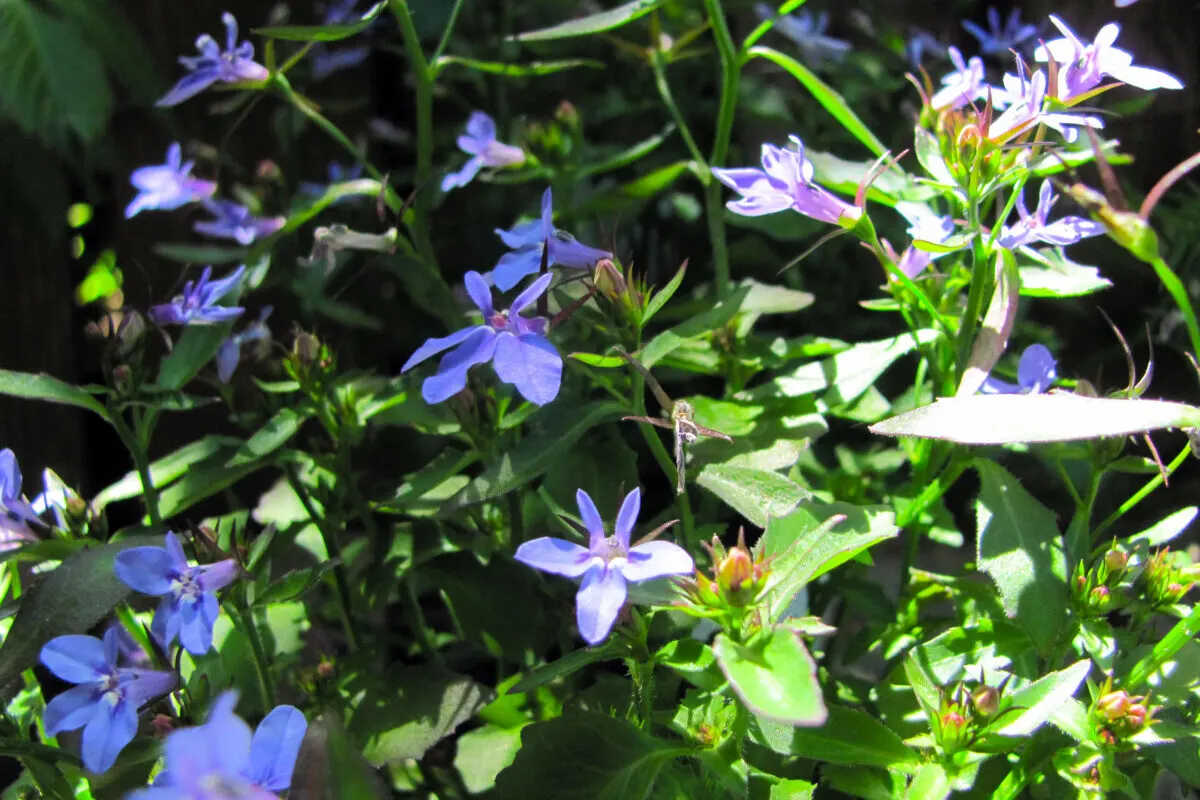
A sprawling, sometimes trailing, mounding plant, annual lobelia has blooms so abundant they cover nearly all the foliage. The half-inch flowers are tubular with a trio of distinctive bottom petals in hues of blue, violet, purple, red, and pink.
This plant performs best in the cooler weather of spring and autumn. Where summers are very hot, lobelia is better placed in spots where it will receive morning sun and afternoon shade. If plants fade due to the heat, shear them back to prompt rebloom.
Lobelia grows just 4 to 9 inches tall and is a lovely filler in hanging baskets, window boxes, and planters that could use more color.
Sun exposure: Full sun to partial shade
Blooming period: April to frost
Spillers Add Texture and Dimension
There’s no better way to showcase trailing flowers and foliage than when they are lifted up and allowed to gracefully tumble over the sides of the basket or pot.
The spiller not only softens the edges of the arrangement but also brings the final word that rounds out the dialogue started by the thriller and the filler.
12. Million Bells (Calibrachoa spp.)
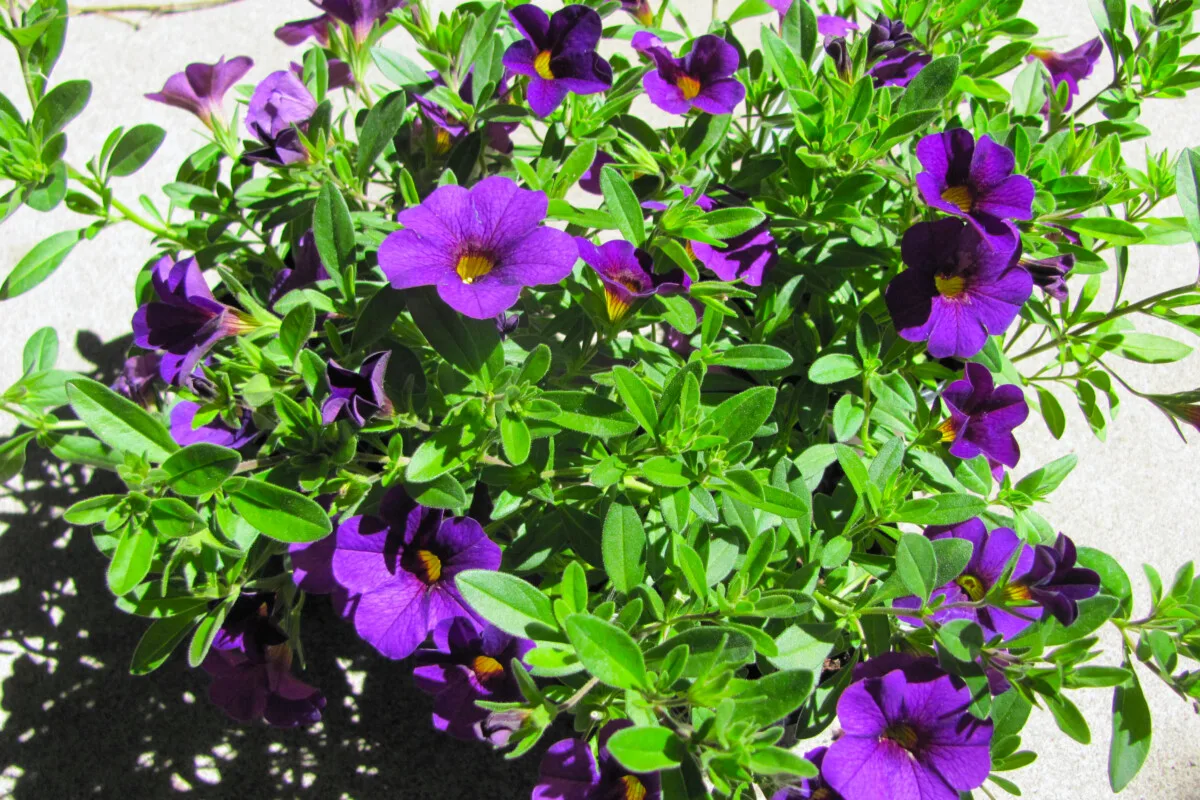
Million bells is an easygoing plant that produces hundreds of small petunia-like flowers throughout the entire growing season. The blooms come in an array of colors – violet, blue, pink, red, magenta, orange, yellow, or white – to help harmonize your overall theme.
It’s a low grower that won’t overwhelm the others, reaching only 3 to 9 inches tall. The long, almost woody stems will spread on and on to nearly 24 inches.
The productive flowers are self-cleaning and don’t need to be deadheaded at all. Million bells doesn’t mind the heat and possesses exceptional drought tolerance, too.
Sun exposure: Full sun
Blooming period: June to frost
13. Golden Creeping Jenny (Lysimachia nummularia ‘Aurea’)
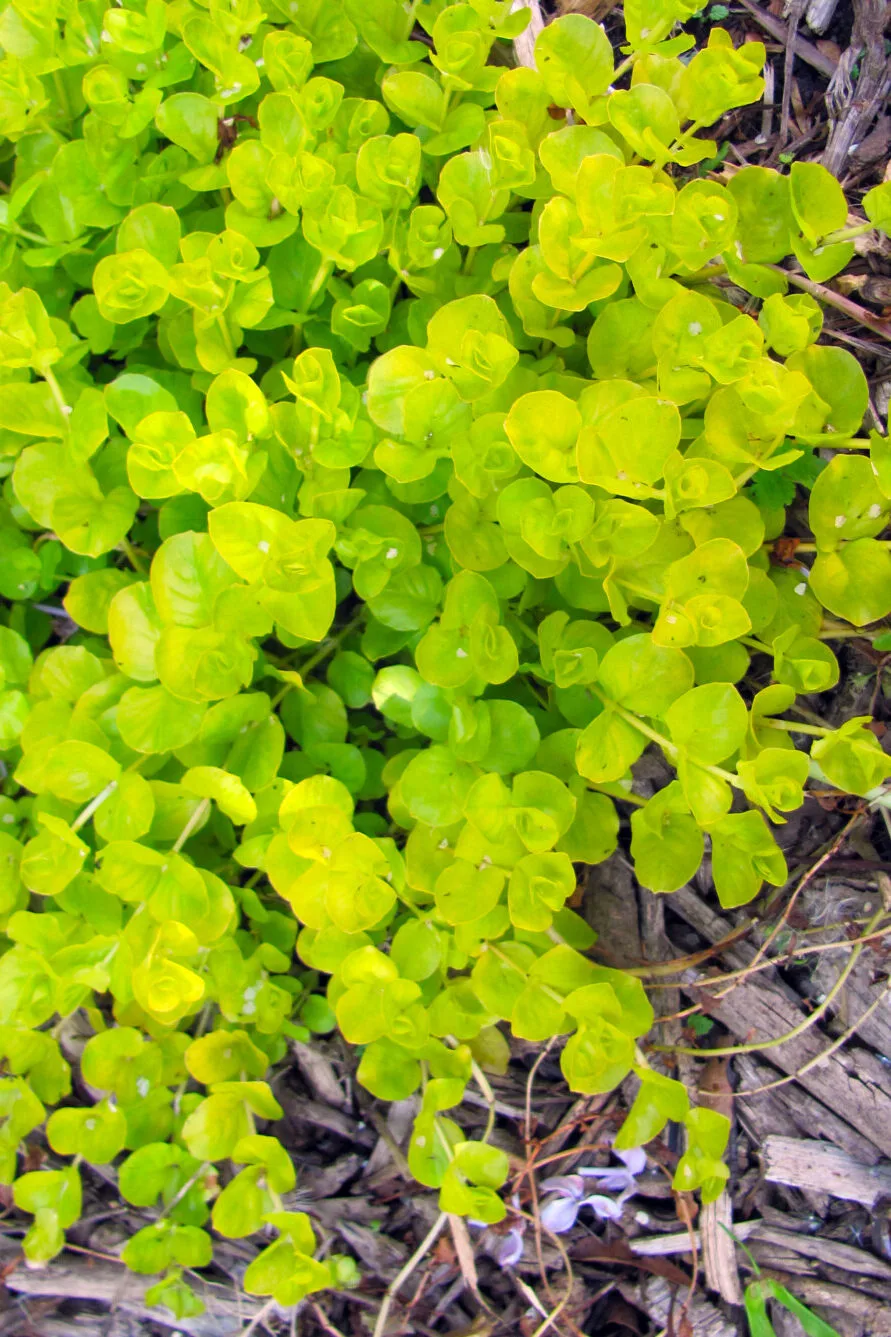
Winter hardy in zones 3 to 9, golden creeping jenny is known to spread uncontrollably when planted in the ground. We can, however, enjoy it without worry when it’s corralled in a container.
It has graceful trailing stems with rounded leaves that provide an excellent contrast to any floral mix. Depending on the level of light it receives, the foliage ranges from lime to chartreuse to golden yellow. In early summer, it blooms all over with bright yellow cup-shaped flowers.
Forming a ground-hugging mat, golden creeping Jenny rises to 2 to 4 inches tall while its lengthy stems will dangle 24 inches over the sides of the container.
Sun exposure: Full sun to partial shade
Blooming period: June
14. Sprenger’s Asparagus Fern (Asparagus densiflorus ‘Sprengeri’)
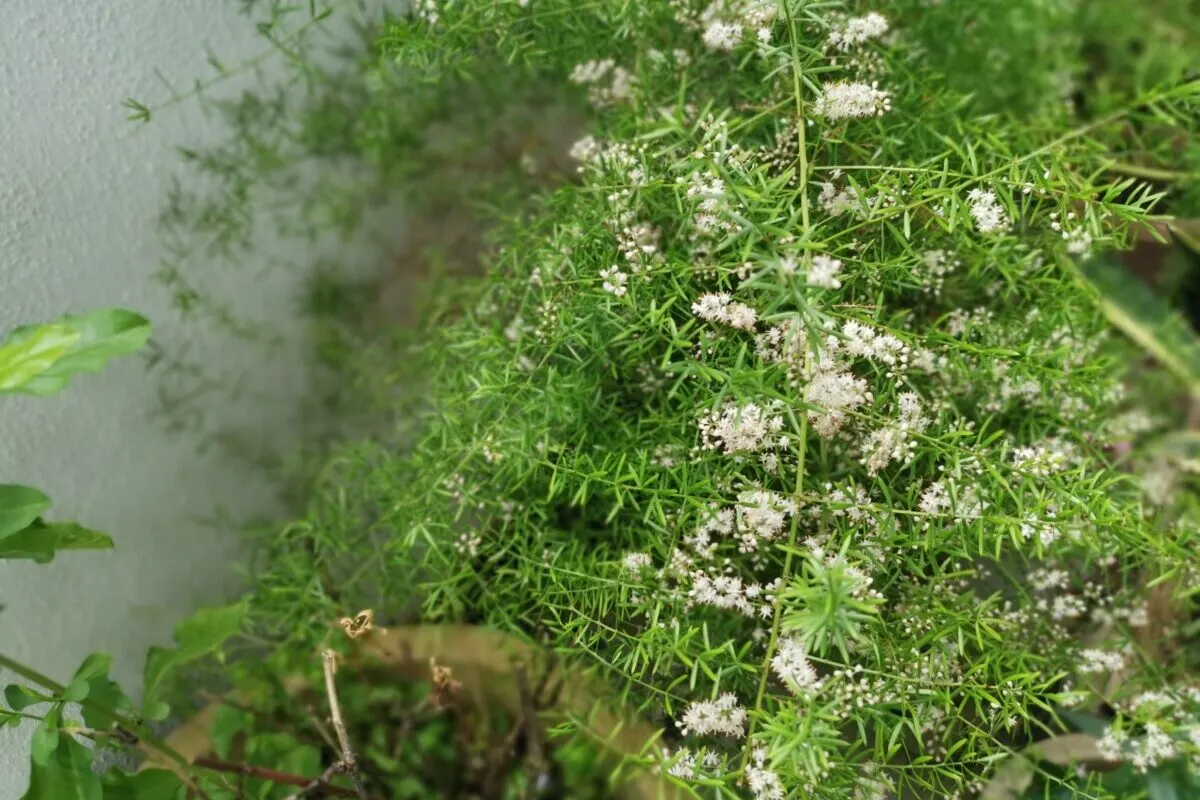
When you want more texture in your flower arrangement, Sprenger’s asparagus fern won’t disappoint.
The arching, semi-stiff stems – covered in soft and fluffy needle-like leaves – give a great contrast to the others in the pot. Draping over the sides up to 24 inches, asparagus fern flowers in late spring with tiny white fragrant blooms that turn to attractive red berries by fall.
In zones 9 to 11, asparagus fern is better suited as a houseplant. It’s invasive in Hawaii, Florida, and California, where the seed is dispersed by birds. In cooler climes, it is killed by frost and is safe to grow outside. Bring it indoors over winter so you can enjoy its feathery fronds year-round.
Sun exposure: Partial shade
Blooming period: May to June
15. Moss Rose (Portulaca grandiflora)
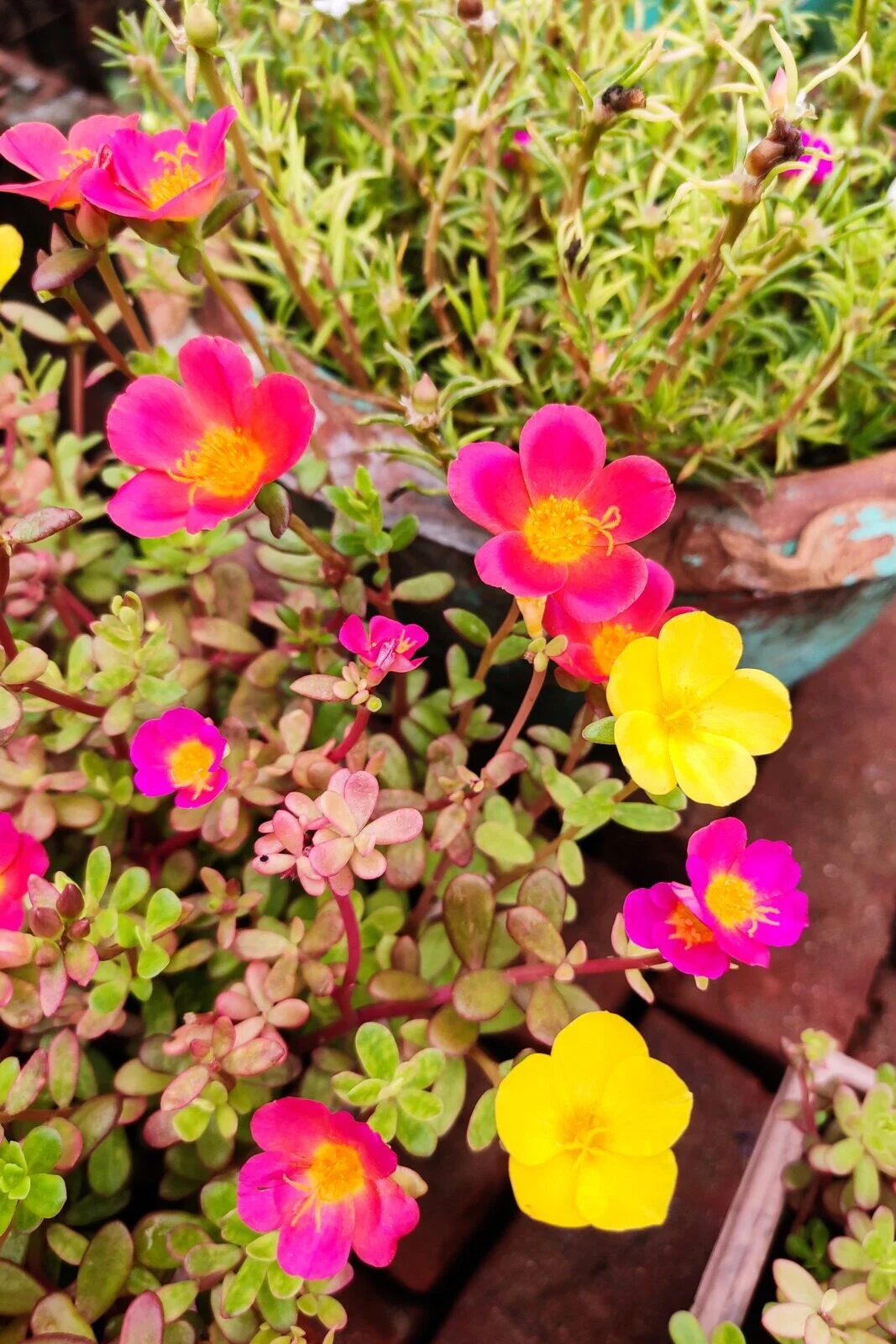
A continuous bloomer with a rambling habit, moss rose is native to South America and likes it hot, dry, and sunny. A good spiller for containers of any size and shape, it grows 6 to 8 inches tall and sprawls more than 12 inches wide.
Moss rose is a succulent with leaves that are narrow and cylindrical, borne on reddish stems. The fleshy foliage makes moss rose very tolerant of heat and drought.
The 1-inch flowers are ruffled like roses and come in single, semi-double, and double forms in red, rose, orange, salmon, white, yellow, and pastel shades. The flowers only open in sunlight and close up tightly on cloudy days.
Sun exposure: Full sun
Blooming period: June to frost
More Flower Mixing Design Tips
These 15 flowering thrillers, fillers and spillers for your container garden are the tip of the iceberg – the options for gorgeous annual plants are many! And don’t forget; there are lots of edible plants you can add to your containers right alongside your flowers. You might even consider adding a strawberry plant or two.
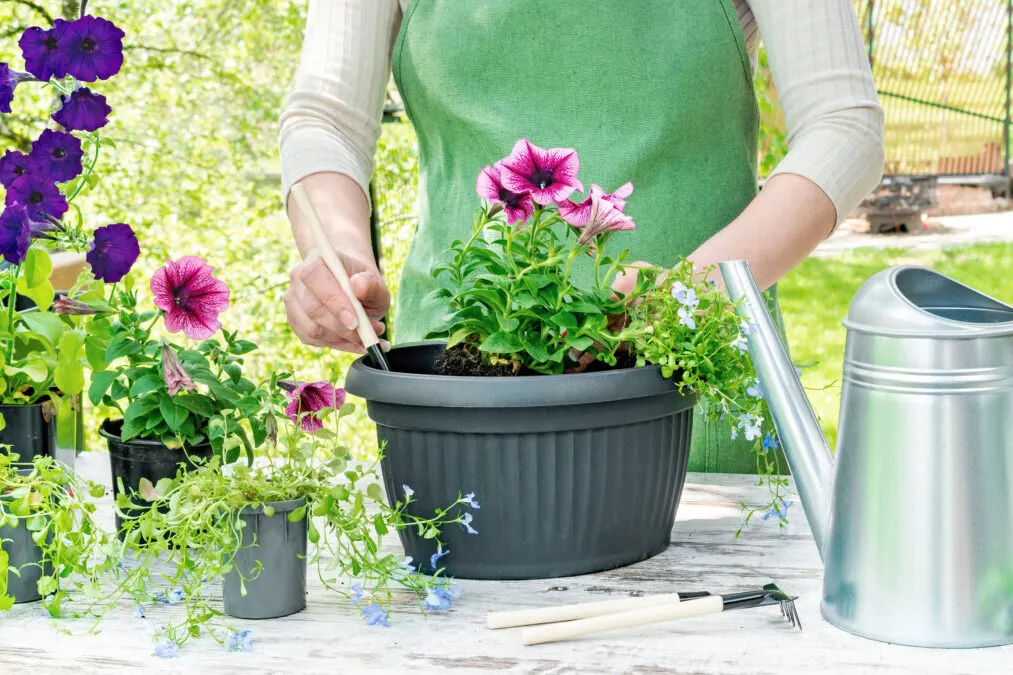
It’s easy to become overwhelmed by choice, so here are a few more design tips to help guide you along in your flower arranging journey:
Less is more.
Depending on the size of the container you’re working with, stick to three types of plants for smaller planters and up to seven for larger ones.
Limit your palette.
A rainbow of colors is great in theory, but throwing the whole kitchen sink into your container can overpower the senses. Use a narrower range of hues, 3 to 5 tops.
Use a color wheel.
Here’s a handy tool for picking out color harmonies – from complementary to monochromatic to tetradic hues.
Break the rules.
The thriller, filler, and spiller technique is a great place to start when combining flowers – but don’t overuse it. When you have numerous pots, boxes, and baskets to fill, relying too much on this method will make all of your mixes appear a bit too formulaic.
The nice thing about potted floral arrangements is they are temporary and get redesigned every spring. You don’t need to have a thriller in every container, for instance, and a series of only mounding and trailing spillers can look pretty amazing too.

Get the famous Rural Sprout newsletter delivered to your inbox.
Including Sunday musings from our editor, Tracey, as well as “What’s Up Wednesday” our roundup of what’s in season and new article updates and alerts.

